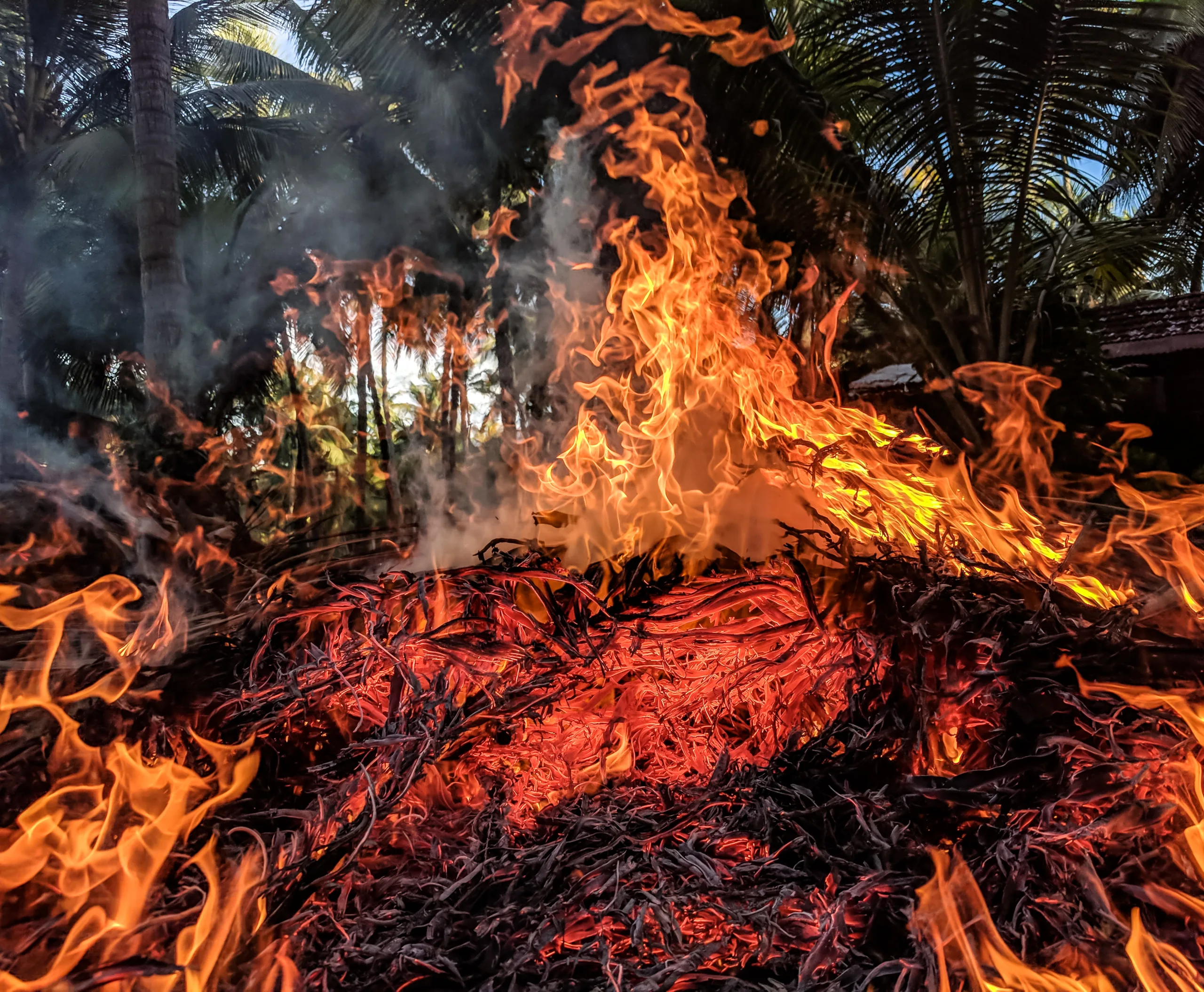Have you ever been in a situation where you desperately need firewood but don’t want to spend money on buying it? If so, then you may be wondering if willow trees can be used for firewood. This article will answer this question, as well as provide information on how to go about using willow wood for firewood and any potential consequences of using it. It will also discuss why some people might not want to use willow wood for firewood. By the end of this article, you’ll have a better idea of whether or not willow trees are suitable for use as firewood.
Yes, willow trees can be used for firewood. Willow wood is a softwood, so it burns quickly and easily and is ideal for creating a fast-burning fire. It is best used in combination with hardwoods such as oak or maple to create a longer-lasting fire.
The Benefits of Burning Willow for Firewood
Burning willow for firewood has a number of benefits. It is an abundant, renewable source of fuel that is easy to find and harvest. Unlike other hardwoods, willow is relatively lightweight and produces a high heat output when burned. As such, it makes an excellent choice for burning in wood stoves and fireplaces. Furthermore, willow is a slow-burning wood that generates a steady heat over time, allowing you to regulate the temperature of your fireplace or stove more easily.
In addition to being an efficient source of heat, willow firewood also produces very little smoke and ash when burned. This means that your home won’t be filled with smoke when you use it for heating purposes. Furthermore, the low amount of ash produced by burning willow firewood makes it easier to clean up after use. This can save you time and energy when you need to clean out your fireplace or wood stove.
Finally, burning willow for firewood can help support local farmers and economies. In many parts of the country, willow trees are grown specifically for the purpose of providing fuel wood. By buying locally sourced firewood from farmers or businesses in your area, you can help support local economies while still enjoying the benefits of burning willow for firewood in your home.
What are the Dangers of Burning Willow for Firewood?
Burning willow as firewood can be a danger to both your home and health. Willow is a softwood, meaning it burns quickly and at a high temperature, making it inefficient as fuel. Because it produces more smoke than hardwoods, burning willow can result in excessive air pollution. Particulate matter from the smoke contains pollutants like carbon monoxide and, when breathed in, can lead to serious health issues such as asthma or other respiratory problems. Additionally, because of its fast-burning nature, willow wood may cause fires to spread quickly throughout your home if left unattended.
For these reasons, it is advised that willow should not be used for firewood; using hardwoods instead is generally a safer option for both your personal health and the environment. Hardwoods like oak and maple are denser than willow and burn slower with less smoke production. Selecting the correct type of wood for your fire is an important step in avoiding potential fires or health risks associated with burning the wrong type of wood.
Other Types of Firewood
Firewood is an essential resource for many home heating and cooking purposes. It is a renewable source of energy that can be harvested from a variety of trees, including hardwoods like oak and maple, as well as softwoods like pine and spruce. However, there are many other types of wood that can also be used for firewood.
Fruit Trees
Fruit trees such as apple, pear, and cherry are excellent sources of firewood. The wood from these trees burns at a slower rate than hardwoods, making them ideal for overnight fires or slow-cooking applications. They also tend to produce less smoke than hardwoods, which makes them better for indoor use.
Palm Trees
Palm trees are another great source of firewood. The wood burns slowly and produces very little smoke, making it ideal for indoor fires and cooking applications. Palm wood also produces a pleasant scent when burned, adding to the ambiance of any room in which it is used.
Tropical Hardwoods
Tropical hardwoods such as mahogany and teak are great choices for firewood. These woods burn slowly and produce very little smoke, making them suitable for both indoor and outdoor use. They also produce nice aromas when burned, adding to the overall atmosphere of any space in which they’re used.
Bamboo
Bamboo is another excellent source of firewood that can be harvested from tropical regions around the world. Bamboo burns slowly and produces less smoke than other types of wood, making it ideal for both indoor and outdoor applications. It has a pleasant aroma when burned, adding to the ambiance of any space in which it is used.
Collecting Willow Firewood
Collecting willow firewood is relatively easy. You can use a handsaw, axe, or even a chainsaw to cut the wood to size. Make sure to wear protective clothing and eye protection when using any cutting tool. It is important to cut the wood in lengths that will fit into your stove or fireplace. Once you have the wood harvested, bundle it together in manageable sizes and move it to a dry area for storage until you are ready to use it.
Storing Willow Firewood
Willow firewood needs to be stored in a dry location so that it does not become damp or wet. You should cover the wood with plastic sheeting or a tarp if you are storing it outside. Make sure that the firewood is elevated off of the ground so that moisture does not collect underneath it. If possible, store the wood in an enclosed area such as a shed or garage for added protection from the elements.
Burning Willow Firewood
When burning willow firewood, make sure that you use proper techniques such as stacking and seasoning. Stacking your wood properly will ensure that there is good airflow around it, allowing for better burning and less smoke. Seasoning your wood by allowing it to dry out over several months will also help with efficiency when burning your firewood. Finally, make sure that you have an appropriate sized firebox for your stove or fireplace when burning your willow firewood so that you can get the most out of each piece of wood without causing any damage to your appliance.

Identifying a Willow Tree
Identifying a willow tree is not difficult. There are several characteristics that make it easy to identify this type of tree. The most obvious characteristic is the drooping branches and twigs, which give the tree its distinct weeping shape. The leaves of the willow are narrow and lance-shaped and grow in an alternating pattern along the branches. The bark of the willow is smooth and gray-brown in color, with small raised ridges running along its length. In addition, the bark can often be seen to have a diamond pattern on its surface. The buds of a willow tree are usually small and round, with several scales overlapping each other. Finally, willows have roots that grow close to the surface of the soil and can often be seen near streams or ponds. All of these characteristics help to identify this type of tree easily.
Willows can also be identified by their flowers, which are small and yellow or greenish in color. These flowers usually bloom in early spring before the leaves appear on the trees. Another way to identify a willow is by its fruit, which is a long, thin seedpod that contains many small seeds inside it. These seedpods typically hang from the branches and can be seen during late summer or early fall. Lastly, some species of willows produce catkins, which are long clusters of tiny flowers that bloom in late winter or early spring before leaves appear on the tree. All these characteristics help to make identifying a willow tree relatively easy for anyone interested in learning more about them.
Burning Willow For Firewood Worth it?
Burning willow for firewood can be a great way to save money as compared to buying traditional firewood. Willow is relatively inexpensive and easy to find, making it an attractive option for those looking for a low-cost source of fuel. Additionally, willow is a renewable resource, meaning it can be harvested without causing permanent damage to the environment. However, there are a few things to consider before using willow for fuel.
Willow wood does not burn as hot or as long as traditional hardwoods such as oak or maple. This means that more fuel must be used in order to achieve the same amount of heat and warmth. Additionally, willow produces more smoke than hardwoods when burned, which can be problematic if burning indoors or in an enclosed space. Moreover, willow can create a lot of sparks when burned, which could potentially start fires if not monitored carefully.
On the other hand, burning willow has some advantages over other types of firewood. It is much easier to light than harder woods and produces fewer creosote deposits in chimneys and woodstoves. Additionally, because it burns at a lower temperature than hardwoods, it produces less ash and soot which can make cleaning up after a fire much easier.
In conclusion, burning willow for firewood can be an economical and sustainable option but may require additional effort on the part of the user due to its lower heat output and increased smoke production compared to hardwoods. As always when dealing with any type of fuel source, safety should always be taken into consideration before use in order to avoid any potential risks associated with fires or smoke inhalation.
Advantages of Burning Willow For Firewood
One of the main advantages of burning willow for firewood is its availability. It is a wood that can be found in many parts of the world and is commonly used for making firewood. Furthermore, it is an affordable option as it does not require much effort to collect and prepare for burning. Additionally, willow wood has a good heating capacity, meaning that it burns for a longer time than other types of wood. This makes it an ideal choice for those who have large fires to keep going for an extended period. The long-burning quality also helps to reduce the amount of smoke produced when willow is burned, making it a much more eco-friendly option.
Disadvantages of Burning Willow For Firewood
Unfortunately, there are also some downsides to using willow as firewood. The first is that because it has such a high heating capacity, it can produce more ash than other types of wood. This means that regular cleaning and maintenance are required in order to keep the fire burning safely and efficiently. Additionally, while willow may be a cheaper option than other types of wood, its cost can add up quickly if you need large amounts of firewood on a regular basis. Finally, because willow burns at such a high temperature, it should only be used in well-ventilated areas so as not to cause any potential health risks from inhaling smoke.

Conclusion
Willow trees can be used for firewood, and this is a great way to use the wood in a sustainable manner. While it may not be the most efficient or cost-effective way to burn firewood, it is certainly an option for those looking for an alternative fuel source. Additionally, willow trees provide an additional benefit of replenishing the soil with nitrogen, which helps other plants to grow.
Overall, willow trees are a great choice for firewood because of their availability, sustainability, and additional benefits they can provide to your garden or landscape. It is important to note that not all species of willow tree are suitable for burning and you should always check with your local fire department before burning any type of wood in your fireplace or wood stove.
Ultimately, if you are looking for a sustainable and environmentally friendly way to heat your home or cook food outdoors, then using willow trees as firewood can be an excellent choice. With proper care and maintenance, you can ensure that your fireplace or outdoor cooking area stays safe and efficient throughout the winter months.

My interest in trees started when I first saw the giant sequoias in Yosemite.
I was a teenager then, and I remember thinking, “I need to learn more about this.”
That moment stuck with me.
A few years later, I went on to study forestry at Michigan Tech.
Since graduating, I’ve worked in a mix of hands-on tree care and community education.
I’ve spent over ten years helping people understand how to plant, maintain, and protect the trees in their neighborhoods.
I don’t see trees as just part of the landscape.
They are living things that make a real difference in our daily lives.
